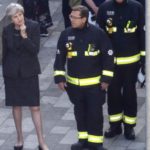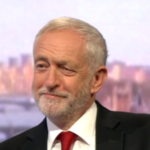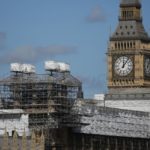
As we approach the end of the English national lockdown, and look towards the Christmas period, the Prime Minister has announced his Covid-19 Winter Plan to parliament and MPs are expected to vote on it early next week. Here’s what we know so far about what these restrictions might mean and how the three-tier system will work as the lockdown ends on the 2nd of December.
What we know so far
The plan hopes to address some of the concerns raised about the previous tier system and to ensure that the progress made during lockdown, in reducing the R number, will not be reversed as the restrictions ease or during the Christmas holidays. The strategy hopes to better balance people’s physical and mental health, whilst protecting the economy.
These new measures will expire at the end of March, and will see local areas being reviewed every 14 days on a clear set of five criteria to determine which tier they are placed into – the previous opacity of this process was one of the criticisms of the earlier tier system. An exception to these restrictions is expected over the Christmas holidays despite the impact this will have on increasing the spread of the virus; more details about this holiday period are expected later this week as the devolved governments co-ordinate their approach.
What are the new tier restrictions?
Tier one – Medium Risk
This is the only tier in which people can mix with those from outside their support bubble or household whilst indoors – provided that they comply with the ‘rule of six’. While pubs still have to stop serving alcohol by 10pm, they have an additional hour before they have to close, with the hopes that this will avoid everyone leaving all at the same time. Outdoor sports can take place with a maximum of 4,000 spectators or 50% of capacity, whichever is smaller.
Tier two – High Risk
The ban on mixing indoors with other households outside the same social bubble has continued from the previous tier system, however, it is still permitted to meet others outside, as long as the ‘rule of six’ is respected. Indoor entertainment venues such as cinemas and casinos must close, but many other commercial restrictions remain similar to tier one but slightly strengthened – for example, while pubs are still operating for the same hours, alcohol can only be served with a substantial meal; and outdoor sports venues are still open, but restricted to a maximum of 2,000 spectators or 50% of capacity.
Tier three – Very High Risk
In this situation, mixing indoors is still forbidden, and mixing outdoors still constrained by the ‘rule of six’. The biggest changes from the previous tier system are that pubs, bars, and restaurants don’t have to close entirely this time but are permitted to provide takeaway and delivery services, and outdoor or amateur team sports are permitted to continue – without spectators.
Unlike last time, even in tier three areas non-essential shops, gyms, and hairdressers can remain open; while previously this was restricted to only essential shops, universities and schools. In all areas measures such as the rule of six and the requirement to wear a facemask indoors will remain in force. People are still being asked to maintain a safe distance at all times and to reduce travel and work from home where possible.
What is the COVID situation in the UK at the moment?
The data shows that the national lockdown has proven to be effective at reducing the growth of the virus, with a noticeable decrease across deaths, admissions, and positive cases. However, the trends suggest that the previous tier system had less impact on controlling the virus, and SAGE has argued that the previous measures were not strong enough, raising questions about how the new system will compare. However, more areas are expected to initially be placed into higher tiers this time than before the second lockdown.
While there is concern about the impact these measures will have, and how the Christmas holiday exception will affect these trends, many are relieved at the gradual easing of restrictions and see it as necessary for the economy and to protect people’s mental health and wellbeing. There are hopes that with an expansion of rapid testing, and a widespread rollout of a vaccine, we could expect the start of a return to normalcy during the beginning of the new year.
Written by Diana Jalea and Alistair Mansfield



Average Rating